Magnetic Stress Sensing System for Nondestructive Stress Testing of Structural Steel and Steel Truss Components Based on Existing Magnetism
Abstract
1. Introduction
2. Theoretical Background
2.1. Structural Steel and Its Magnetic Properties
2.2. Magnetic Stress Sensing Theories
2.3. Magnetic Flux Sensing System
2.4. Existing Magnetism of Structural Steel Specimens Measured by Magnetic Sensing Coil
2.5. Magnetic Stress-Sensing System and Application for Structural Steel Specimens
3. Experimental Study
3.1. Steel Truss Model Structure
3.2. Magnetic Stress Sensing System for Steel Truss Structure
3.3. Test Results
4. Discussion
5. Conclusions
- The magnetic stress sensing system, which integrates a magnetic flux induction coil, a magnetic flux measurement device, a loaded device, and data acquisition software, can be used for nondestructive online testing of the stress of structural members;
- The existing magnetism of the structural bridge and building steels is affected by the chemical composition, grade, and diameter. The effect of the existing magnetism on the initial magnetization is obvious. The maximum magnetization in the magnetization curve is different. The maximum magnetization of the structural bridge steel is higher than that of structural building steel of the same grade;
- In the range of linear elasticity, the magnetic flux variation of structural steel specimens based on the existing magnetism is related to the steel grade and diameter of specimens, which increases with the increase of the stress. By using the magnetic stress flux mathematical model based on the existing magnetism, nondestructive online detection of the stress of structural members can be realized by measuring the magnetic flux;
- The stress detection of the steel truss model structure was carried out by measuring the magnetic flux using the magnetic stress sensing system. This method can overcome the deficiency of the loading history required by traditional strain measurements. The test results were in good agreement with the stress–strain constitutive relation;
- The results of the magnetic flux measurement by the magnetic stress sensing system based on the existing magnetism of the steel truss structure agree well with those of the numerical simulation and calculation. The validity of the magnetic stress flux mathematical model based on existing magnetism established in this paper is verified.
Author Contributions
Funding
Conflicts of Interest
References
- Kang, B.H.; Kim, J.H.; Choi, K.Y.; Gwak, K.W. Design of a Truss Body Parallel Manipulator to Avoid the Stress Concentration. In Proceedings of the 15th International Conference on Ubiquitous Robots, Honolulu, HI, USA, 26–30 June 2018; pp. 604–609. [Google Scholar]
- Jiki, P.N.; Agber, J.U. Damage evaluation in gap tubular truss ‘K’ bridge joints using SFEM. J. Constr. Steel Res. 2014, 93, 135–142. [Google Scholar] [CrossRef]
- Jiang, L.; Liu, Y.J.; Fam, A.; Liu, J.; Liu, B. Stress concentration factor parametric formulae for concrete-filled rectangular hollow section K-joints with perfobond ribs. J. Constr. Steel Res. 2019, 160, 579–597. [Google Scholar] [CrossRef]
- Soloviev, A.N.; Parinov, I.A.; Cherpakov, A.V.; Chaika, Y.A.; Rozhkov, E.V. Analysis of oscillation forms at defect identification in node of truss based on finite element modeling. Mater. Phys. Mech. 2018, 37, 192–197. [Google Scholar]
- Ghaffarzadeh, H.; Raeisi, F. Damage identification in truss structures using finite element model updating and imperialist competitive algorithm. Jordan J. Civ. Eng. 2016, 10, 266–277. [Google Scholar] [CrossRef][Green Version]
- Wang, Y.; Qu, W.L. Moving train loads identification on a continuous steel truss girder by using dynamic displacement influence line method. Int. J. Steel Struct. 2011, 11, 109–115. [Google Scholar] [CrossRef]
- Seyedpoor, S.M.; Montazer, M. A damage identification method for truss structures using a flexibility-based damage probability index and differential evolution algorithm. Inverse Probl. Sci. Eng. 2016, 24, 1303–1322. [Google Scholar] [CrossRef]
- Cho, S.; Giles, R.K.; Spencer, B.F. System identification of a historic swing truss bridge using a wireless sensor network employing orientation correction. Struct. Control Health Monit. 2015, 22, 255–272. [Google Scholar] [CrossRef]
- Ren, J.Y.; Su, M.B.; Zeng, Q.Y. Damage identification of railway simply supported steel truss bridge based on support vector machine. J. Appl. Sci. 2013, 13, 3589–3593. [Google Scholar] [CrossRef]
- Bai, L.S.; Li, G.; Jin, Y.Q.; Li, H.N. A Structure state identification method for truss structures with separated damage. J. Eng. Mech. 2019, 36, 53–60. [Google Scholar]
- Chen, H.; Xu, L.; He, X. Study on Fault Diagnosis of Cross-Structure of Assembled Steel Truss Bridge. Mater. Sci. Eng. C 2019, 40, 168–173. [Google Scholar]
- Yan, W.J.; Wang, P.P.; Sun, Q.; Ren, W.X. Recent advances in system identification using the transmissibility function. J. Eng. Mech. 2018, 35, 1–9. [Google Scholar] [CrossRef]
- Banan, M.R.; Banan, M.R.; Hjelmstad, K.D. Parameter estimation of structures from static response. I. Computational aspects. J. Struct. Eng. 2015, 120, 3243–3258. [Google Scholar] [CrossRef]
- Devriendt, C.; Weijtjens, W.; De Sitter, G.; Guillaume, P. Combining multiple single-reference transmissibility functions in a unique matrix formulation for operational modal analysis. Mechan. Mech. Syst. Signal Process. 2013, 40, 278–287. [Google Scholar] [CrossRef]
- Goldfeld, Y.; Elias, D. Using the exact element method and modal frequency changes to identify distributed damage in beams. Eng. Struct. 2013, 51, 60–72. [Google Scholar] [CrossRef]
- Mierczak, L.; Jiles, D.C.; Fantoni, G. A new method for evaluation of mechanical stress using the reciprocal amplitude of magnetic Barkhausen noise. IEEE Trans. Magn. 2011, 47, 459–462. [Google Scholar] [CrossRef]
- Qiu, Z.C.; Zhang, W.M.; Guo, Y.; Dubov, A.A. Analysis of magnetic stress coupling effect in weak magnetic environment. J. Beijing Inst. Technol. 2015, 24, 471–477. [Google Scholar]
- Tenkamp, J.; Haack, M.; Walther, F.; Weibring, M.; Tenberge, P. Application of micro-magnetic testing systems for non-destructive analysis of wear progress in casehardened 16MnCr5 gear wheels. Mater. Test. 2016, 58, 709–716. [Google Scholar] [CrossRef]
- Mccord, J.; Schafer, R.; Frommberger, M.; Glasmachers, S.; Quandt, E. Stress-induced remagnetization in magnetostrictive films. J. Appl. Phys. 2004, 95, 6861–6863. [Google Scholar] [CrossRef]
- Kim, J.-W.; Park, S. Magnetic Flux Leakage Sensing and Artificial Neural Network Pattern Recognition Based Automated Damage Detection and Quantification for Wire Rope Non-Destructive Evaluation. Sensors 2018, 18, 109. [Google Scholar] [CrossRef]
- Xia, R.; Zhou, J.; Zhang, H.; Liao, L.; Zhao, R.; Zhang, Z. Quantitative Study on Corrosion of Steel Strands Based on Self-Magnetic Flux Leakage. Sensors 2018, 18, 1396. [Google Scholar] [CrossRef]
- Shleenkov, A.S.; Bulychev, O.A.; Shleenkov, S.A. The UMD-101M plant for automated bulk magnetic nondestructive testing of quality of electric-welded pipes. Russ. J. Nondestruct. Test. 2008, 44, 574–578. [Google Scholar] [CrossRef]
- Matsumoto, T.; Uchimoto, T.; Takagi, T.; Dobmann, G.; Ducharne, B.; Oozono, S.; Yuya, H. Investigation of electromagnetic nondestructive evaluation of residual strain in low carbon steels using the eddy current magnetic signature (EC-MS) method. J. Magn. Magn. Mater. 2019, 479, 212–221. [Google Scholar] [CrossRef]
- Loskutov, V.E.; Matvienko, A.F.; Patramanskii, B.V.; Shcherbinin, V.E. The magnetic method for in-tube nondestructive testing of gas and oil pipelines: The past and the present. Russ. J. Nondestruct. Test. 2006, 42, 493–504. [Google Scholar] [CrossRef]
- Yang, L.J.; Geng, H.; Gao, S.W. Magnetic flux leakage internal detection technology of the long distance oil pipeline. Chin. J. Sci. Instr. 2016, 37, 1736–1746. [Google Scholar]
- Cheng, Z.Y.; Song, K.; Dong, S.Y.; Men, P.; Li, Y.M. Optimization and Experimental Study of Stress Detection Based on MBN Method. Non-Destruc. Tes. 2018, 40, 13–18. [Google Scholar]
- Wan, Q.; Niu, H.P.; Wei, L.M.; Sun, L.; Hu, S.Q. Study on Nondestructive Detection Technique of Weak Magnetic Tomography for Oil and Gas Pipelines. Appl. Math. Mech. 2014, 35, 221–225. [Google Scholar]
- Xiong, E.G.; Wang, S.L.; Miao, X.Y. Research on Magnetomechanical Coupling Effect of Q235 Steel Member Specimens. Shanghai Jiaotong Univ. Sci. 2012, 7, 605–612. [Google Scholar] [CrossRef]
- Min, X.H.; Yang, L.J.; Wang, G.Q.; Rao, X.; Liu, B. Weak Magnetism Stress Internal Testing Technology of the Long Distance Oil-gas Pipeline. J. Mech. Eng. 2017, 53, 19–27. [Google Scholar] [CrossRef]
- Duan, Y.F.; Zhang, R.; Zhao, Y.; Or, S.W.; Fan, K.Q.; Tang, Z.F. Smart-Elasto-Magneto-Electric (EME) Sensors for Stress Monitoring of Steel Structures in Railway Infrastructures. J. Zhejiang Univ. Sci. 2012, 12, 895–901. [Google Scholar] [CrossRef]
- Kolokolnikov, S.M.; Dubov, A.A.; Marchenkov, A.Y. Determination of mechanical properties of metal of welded joints by strength parameters in the stress concentration zones detected by the metal magnetic memory method. Weld World. 2014, 58, 699–706. [Google Scholar] [CrossRef]
- Wang, G.Q.; Yang, L.J.; Liu, B. Study on the testing method of oil-gas pipeline stress damage based on magnetic memory. Chin. J. Sci. Instr. 2017, 38, 271–278. [Google Scholar]
- Zhu, W.X.; Qin, H.Y.; Li, J.; Ou, J.P. Monitoring Cable Force of FAST Project Based on Fiber Bragg Grating Sensor External Installed on Anchorage Zone. J. Mech. Eng. 2017, 53, 23–30. [Google Scholar] [CrossRef]
- Cullity, B.D.; Graham, C.D. Introduction to Magnetic Materials, 2nd ed.; John Wiley & Sons, Inc.: Hoboken, NJ, USA, 2008. [Google Scholar]
- Solovyov, M.; Souc, J.; Kovac, J.; Gomory, F.; Mikulasova, E.; Usakova, M.; Usak., E. Design of Magnetic Cloak for Experiments in AC Regime. IEEE Trans. Appl. Supercond. 2016, 26, 1–6. [Google Scholar] [CrossRef]
- Niu, M.D.; Yong, H.D.; Xia, J.; Zhou, Y.H. The Effects of Ferromagnetic Disks on AC Losses in HTS Pancake Coils with Nonmagnetic and Magnetic Substrates. J. Supercond. Nov. Magn. 2019, 32, 499–510. [Google Scholar] [CrossRef]
- Kachniarz, M.; Jackiewicz, D.; Nowicki, M.; BieĔkowski, A.; Szewczyk, R.; Winiarski, W. Magnetoelastic Characteristics of Constructional Steel Materials. Adv. Intell. Syst. Comput. 2015, 317, 307–315. [Google Scholar]
- Weng, G.; Zhang, Y.M.; Dai, J.B.; Shi, Y. Magnetic coupling effect and on-line nondestructive stress detection of pipeline steel. J. Xi’an Shiyou Univ. 2019, 34, 104–109. [Google Scholar]


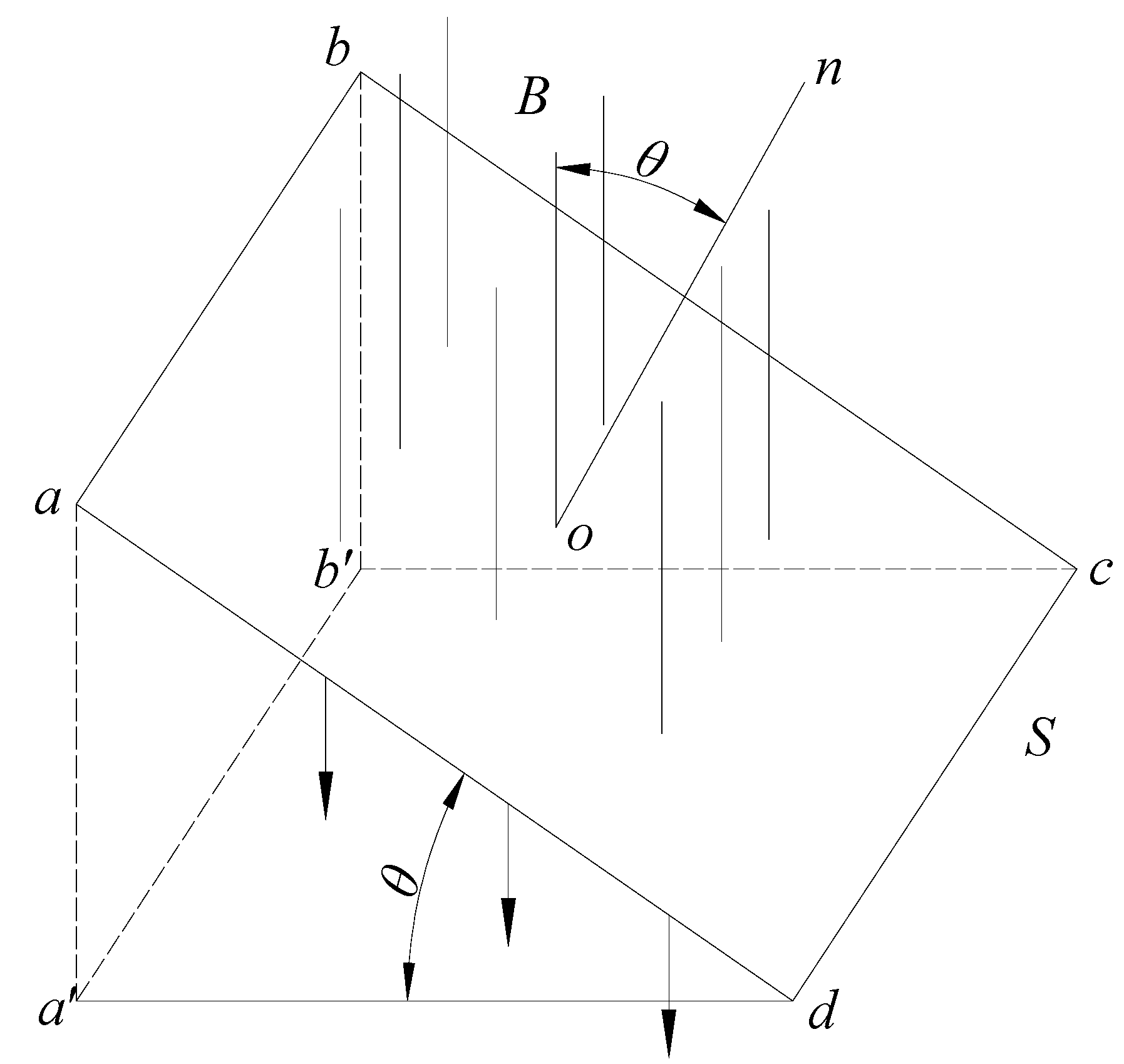



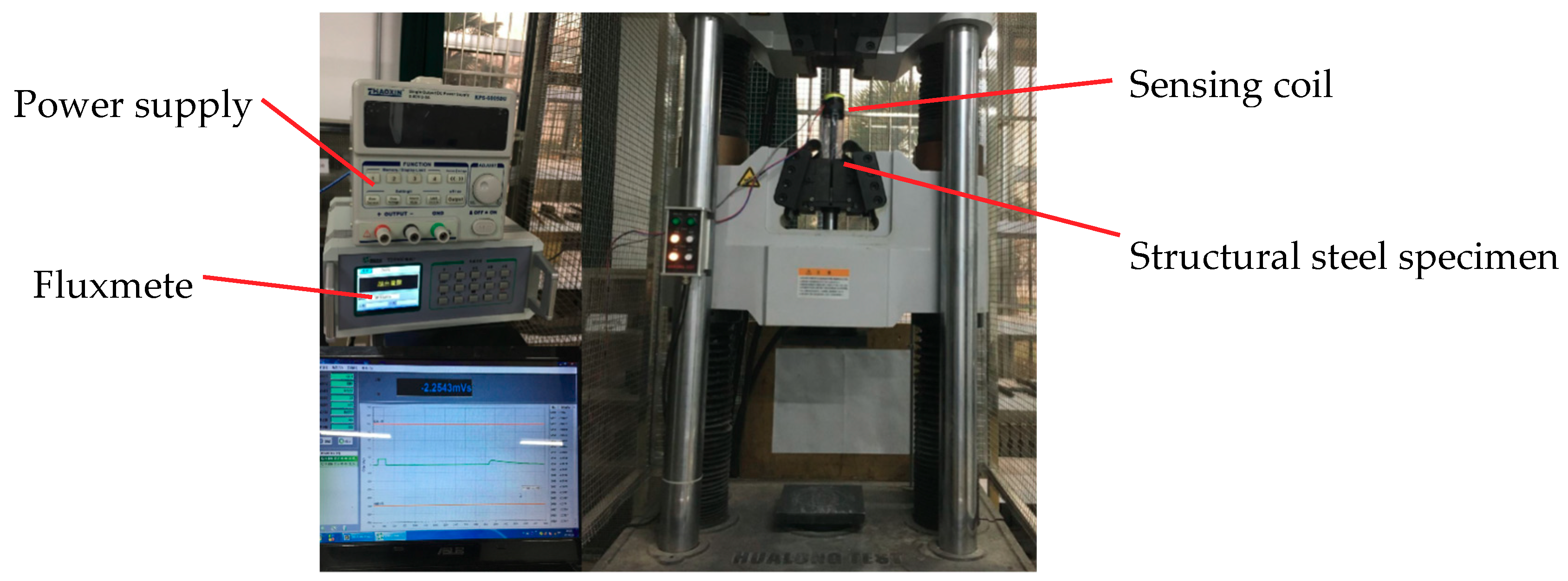
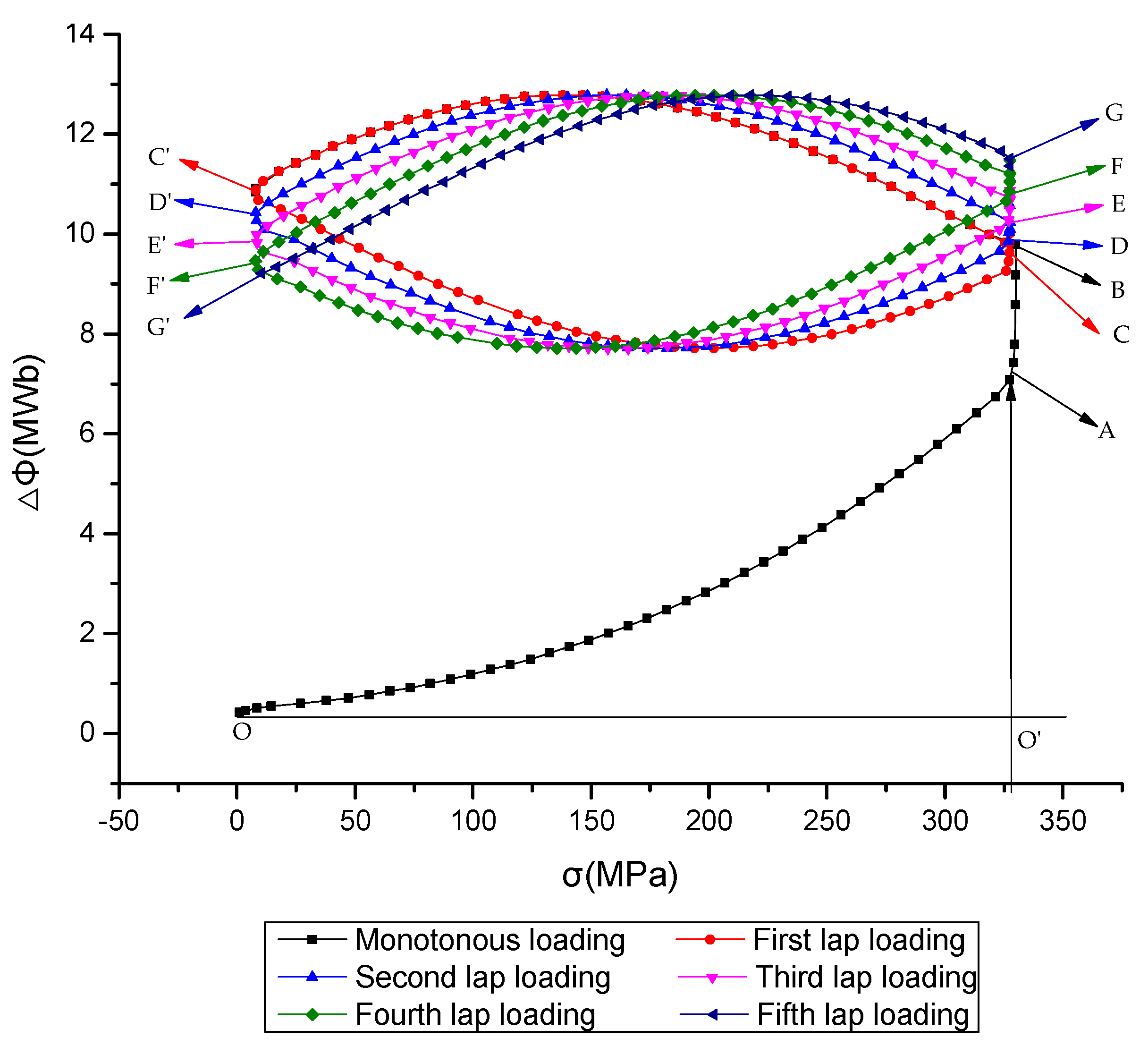
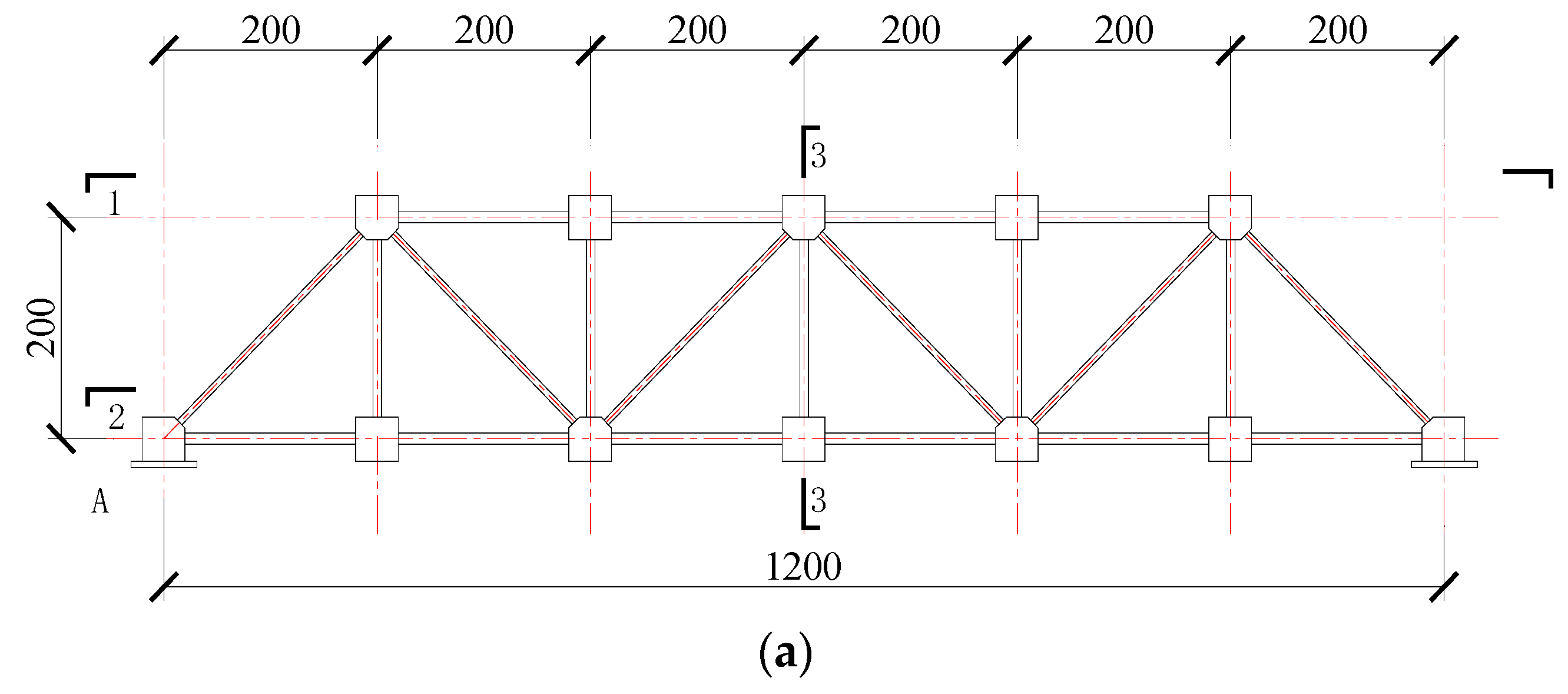



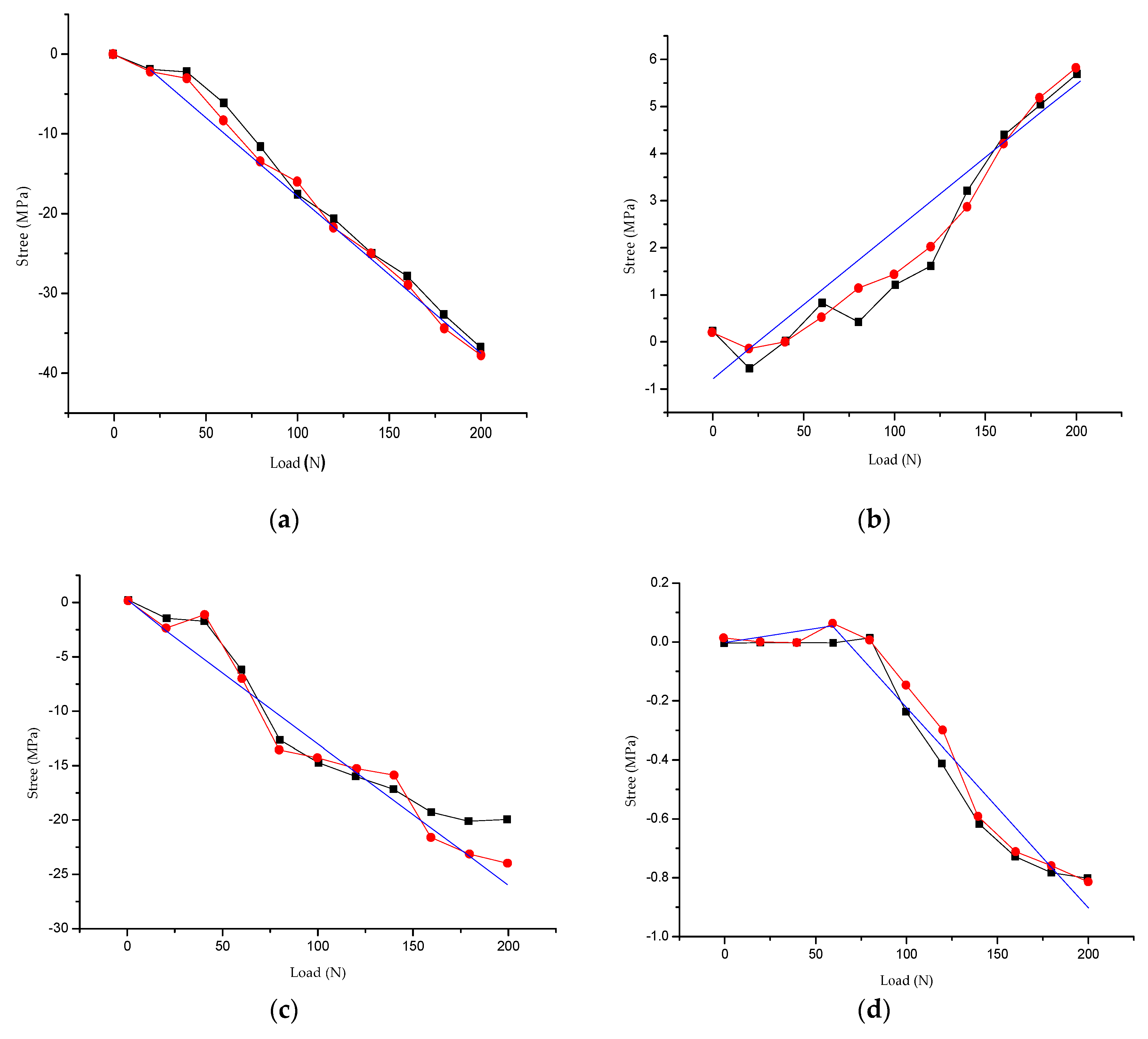

| Type | Grade | Chemical Composition (%) | ||||||||
|---|---|---|---|---|---|---|---|---|---|---|
| C | Si | Mn | P | S | V | Nb | Ti | Al | ||
| Structural building steel | Q235B | 0.15 | 0.20 | 0.38 | 0.040 | 0.024 | — | — | — | — |
| Q345B | 0.15 | 0.45 | 1.30 | 0.020 | 0.035 | 0.08 | 0.040 | 0.10 | — | |
| Q390B | 0.15 | 0.45 | 1.30 | 0.020 | 0.035 | 0.10 | 0.040 | 0.10 | — | |
| Q420B | 0.13 | 0.35 | 1.30 | 0.025 | 0.030 | 0.15 | 0.035 | 0.15 | — | |
| Structural bridge steel | Q235qD | 0.17 | 0.25 | 0.68 | 0.016 | 0.015 | — | — | — | 0.017 |
| Q345qD | 0.16 | 0.41 | 1.35 | 0.016 | 0.015 | — | — | — | 0.016 | |
| Q375qD | 0.16 | 0.41 | 1.35 | 0.016 | 0.015 | — | — | — | 0.016 | |
| Q420qD | 0.16 | 0.45 | 1.50 | 0.016 | 0.010 | — | — | — | 0.016 | |
| Grades | Maximum Magnetization (A·m2) | Grades | Maximum Magnetization (A·m2) |
|---|---|---|---|
| Q235B | 1.72 | Q235qD | 1.78 |
| Q345B | 1.75 | Q345qD | 1.81 |
| Q390B | 1.79 | Q375qD | 1.84 |
| Q420B | 1.83 | Q420qD | 1.87 |
| Specimens | Direction | Fitting Equation |
|---|---|---|
| Q235B | forward | y = −9 × 10−5x2 + 0.0023x + 8.1683 |
| reverse | y = 7 × 10−5x2 + 0.0007x − 5.998 | |
| Q345B | forward | y = −8 × 10−5x2 + 0.0019x + 6.8152 |
| reverse | y = 9 × 10−5x2 − 0.0008x − 5.8377 | |
| Q390B | forward | y = −5 × 10−5x2 + 0.0012x + 4.0601 |
| reverse | y = 5 × 10−5x2 − 0.0012x − 4.0601 | |
| Q420B | forward | y = −2 × 10−5x2 − 0.0002x + 1.2025 |
| reverse | y = 2 × 10−5x2 + 0.0002x − 1.2025 | |
| Q235qD | forward | y = −7 × 10−5x2 − 0.0016x + 6.0111 |
| reverse | y = 6 × 10−5x2 −0.0016x − 4.7525 | |
| Q345qD | forward | y = −7 × 10−5x2 − 6 × 10−5x + 5.167 |
| reverse | y = 5 × 10−5x2 − 0.0008x − 4.1536 | |
| Q375qD | forward | y = −7 × 10−5x2 − 0.0006x + 5.4675 |
| reverse | y = 6 × 10−5x2 − 4 × 10−5x − 4.4287 | |
| Q420qD | forward | y= −8 × 10−5x2 + 0.0015x + 5.6011 |
| reverse | y = 7 × 10−5x2 − 0.0013x − 4.5002 |
© 2020 by the authors. Licensee MDPI, Basel, Switzerland. This article is an open access article distributed under the terms and conditions of the Creative Commons Attribution (CC BY) license (http://creativecommons.org/licenses/by/4.0/).
Share and Cite
Weng, G.; Wang, J.; Liu, Y.; Zhu, X.; Dai, J. Magnetic Stress Sensing System for Nondestructive Stress Testing of Structural Steel and Steel Truss Components Based on Existing Magnetism. Sensors 2020, 20, 4043. https://doi.org/10.3390/s20144043
Weng G, Wang J, Liu Y, Zhu X, Dai J. Magnetic Stress Sensing System for Nondestructive Stress Testing of Structural Steel and Steel Truss Components Based on Existing Magnetism. Sensors. 2020; 20(14):4043. https://doi.org/10.3390/s20144043
Chicago/Turabian StyleWeng, Guangyuan, Jintao Wang, Yang Liu, Xiyu Zhu, and Jianbo Dai. 2020. "Magnetic Stress Sensing System for Nondestructive Stress Testing of Structural Steel and Steel Truss Components Based on Existing Magnetism" Sensors 20, no. 14: 4043. https://doi.org/10.3390/s20144043
APA StyleWeng, G., Wang, J., Liu, Y., Zhu, X., & Dai, J. (2020). Magnetic Stress Sensing System for Nondestructive Stress Testing of Structural Steel and Steel Truss Components Based on Existing Magnetism. Sensors, 20(14), 4043. https://doi.org/10.3390/s20144043





